Just east of the center of downtown of the city of Marietta in the state of Georgia is a national cemetery which contains the remains of 10,132 officers and soldiers — and arguably, no day is better to commemorate their service that Memorial Day to acknowledge them.
Memorial Day 2020: Marietta National Cemetery
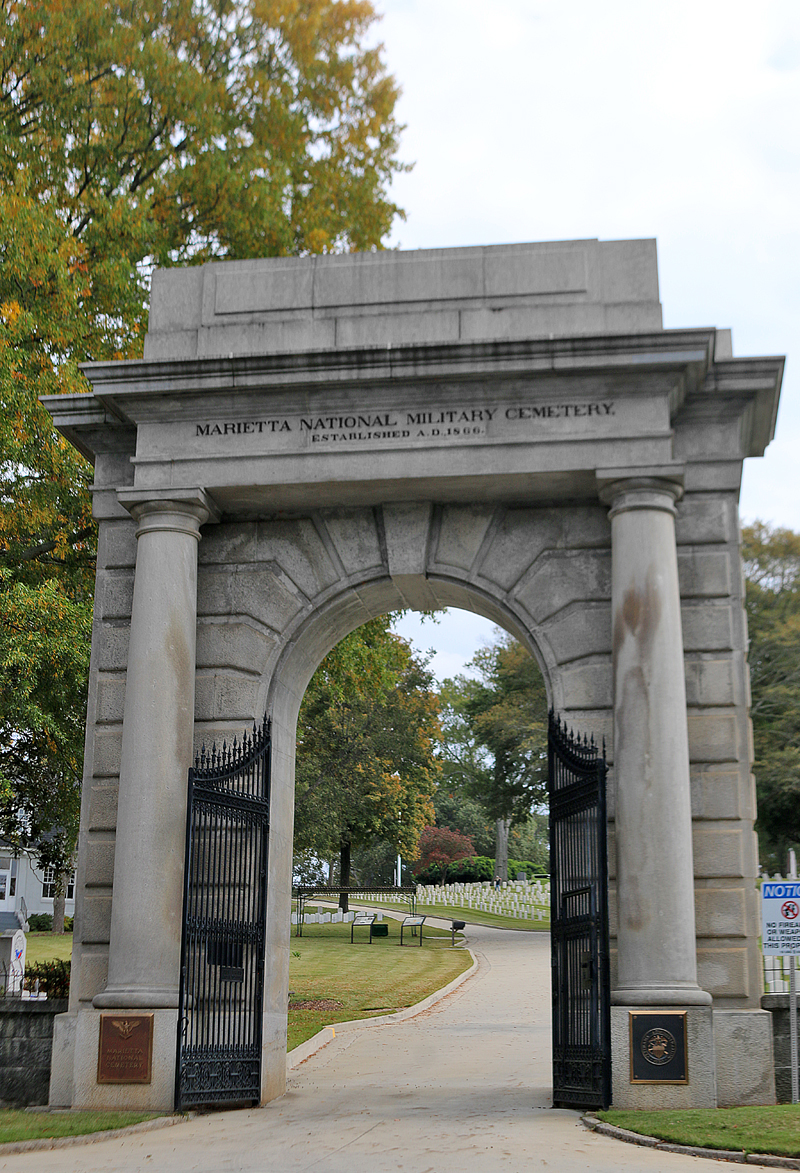
The entrance to Marietta National Cemetery is through the cemetery gate of the monumental masonry archway, which was constructed in 1904 and is located on Washington Avenue in Marietta. The 23 acres of the grounds of the cemetery were established by the United States Army in 1866.
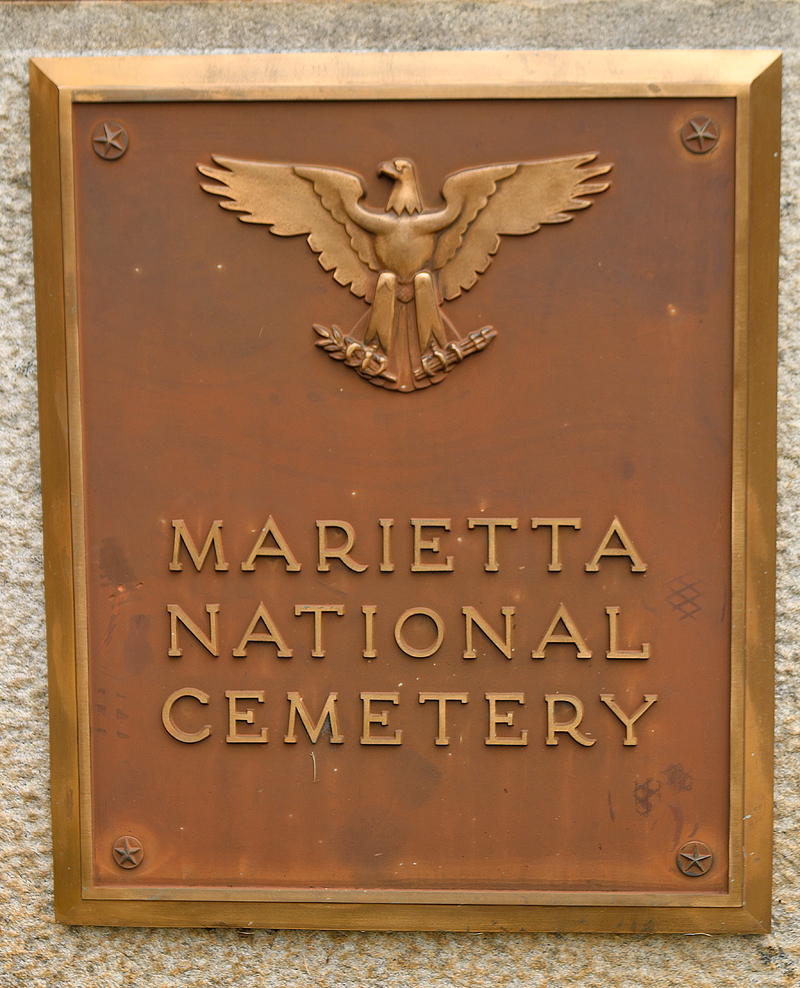
The plaque which identifies Marietta National Cemetery is located at the bottom of the exterior left pillar of the monumental arch.
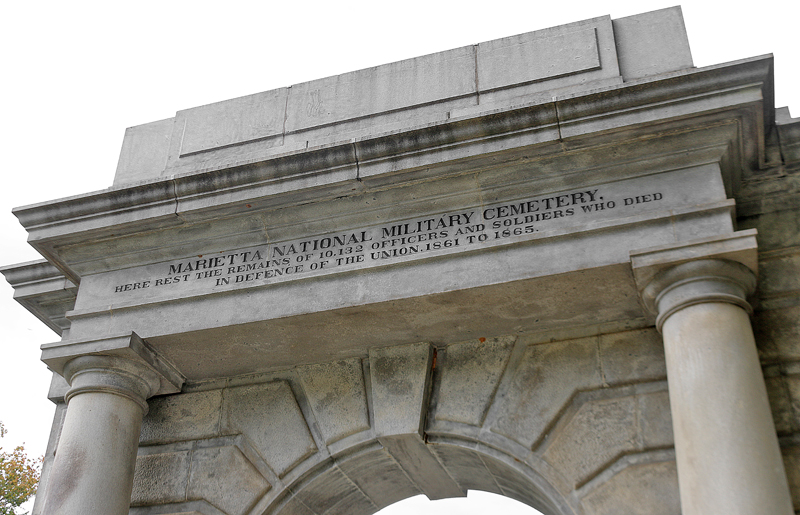
Inscribed at the top of the granite memorial monumental arch inside of the Marietta National Military Cemetery are the words “Here rest the remains of 10,132 officers and soldiers who died in defence of the Union, 1861 to 1865.”

The Office of the Quartermaster General of the United States Army constructed the monumental arch, which is approximately 35 feet tall with Doric columns and a pair of ornamental iron gates which were inspired by Roman architecture.
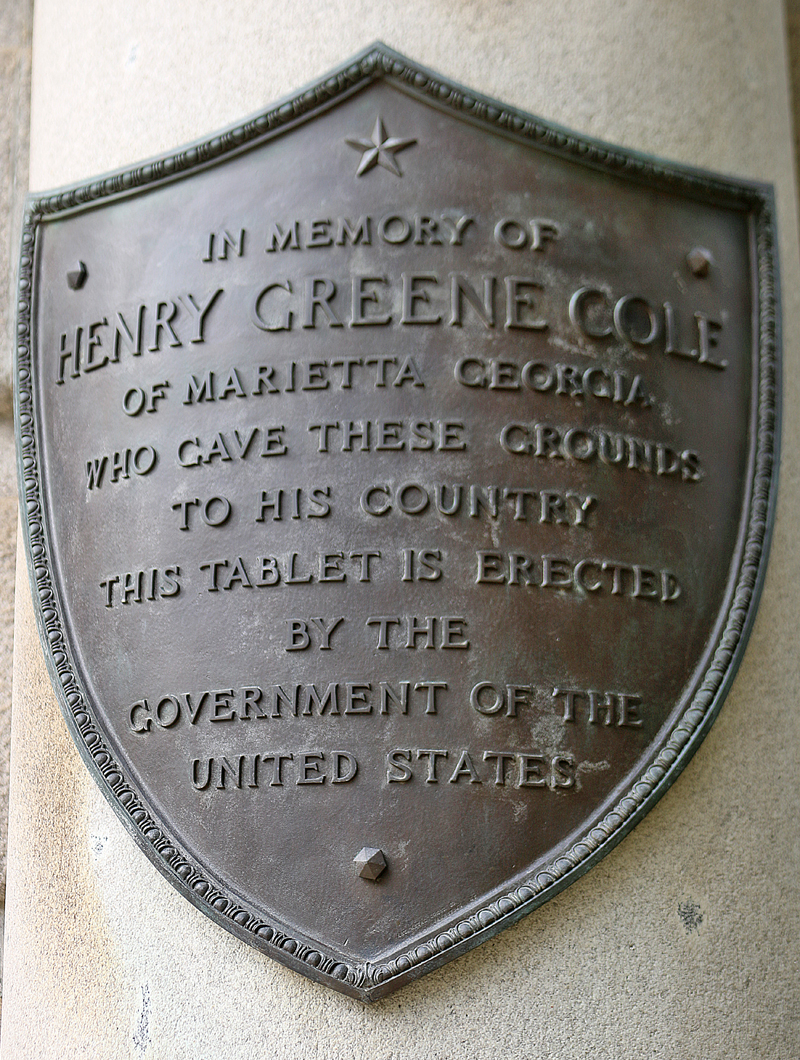
The land on which the cemetery is located was donated by Henry Greene Cole, who had moved to Georgia from New York in 1838 to work as a civil engineer for a railroad. Later he became a successful businessman in Marietta. During the Civil War, Cole remained loyal to the Union and spied for federal forces. Confederate officials arrested and imprisoned him in 1864 for these activities. After the war, Cole returned to Marietta, where he lived until his death on April 18, 1875. He is buried in a family plot — which is now known as the Cole Plot — at the national cemetery.
The plaque which is dedicated to Henry Greene Cole is located at the bottom of the interior right pillar of the monumental arch.
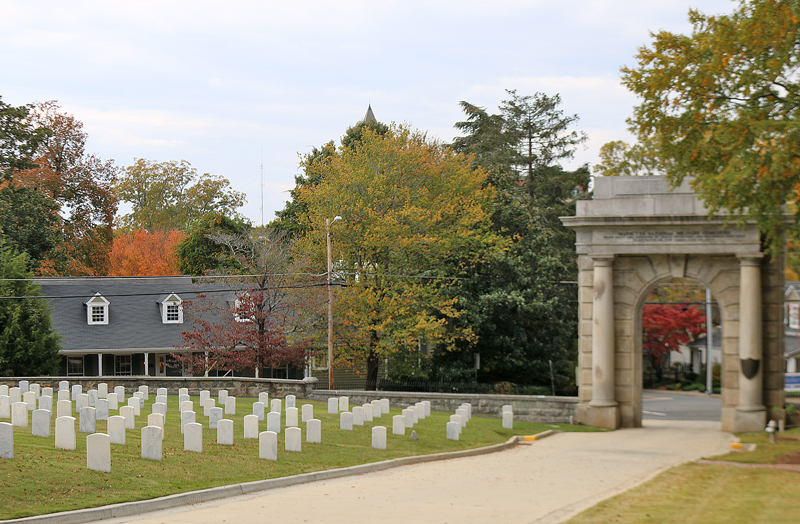
Marietta National Cemetery is home to one of five classically inspired arches which were built at national cemeteries in the southern United States that originally served as the formal entrance to the cemetery.
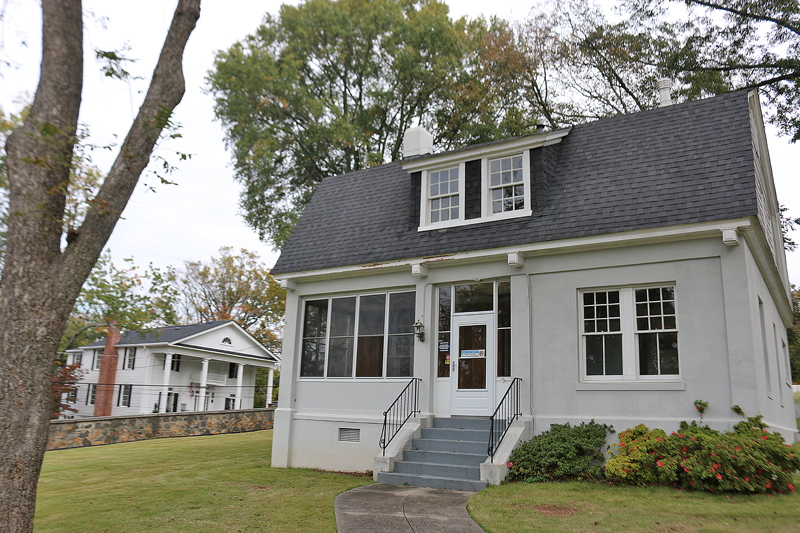
A brick lodge — which was built near the entrance of the cemetery — was replaced in 1921.

A section of the grounds of the Marietta National Cemetery is set aside for the Pearl Harbor Monument, at which visitors may take a moment for quiet reflection.

The Pearl Harbor Monument was erected by the Pearl Harbor Survivors Association — which was founded in 1958 — on Saturday, December 7, 1996; and it was dedicated to both those who died and those who survived the attack on Pearl Harbor by Japanese forces on Sunday, December 7, 1941.

On the right side of the burial area and rostrum at Marietta National Cemetery is the Wisconsin Monument, which was dedicated on Memorial Day on Monday, May 25, 1925 to the memory of 405 sons of that state who perished during the Civil War. The Wisconsin Monument was the last Civil War memorial placed in the cemetery.
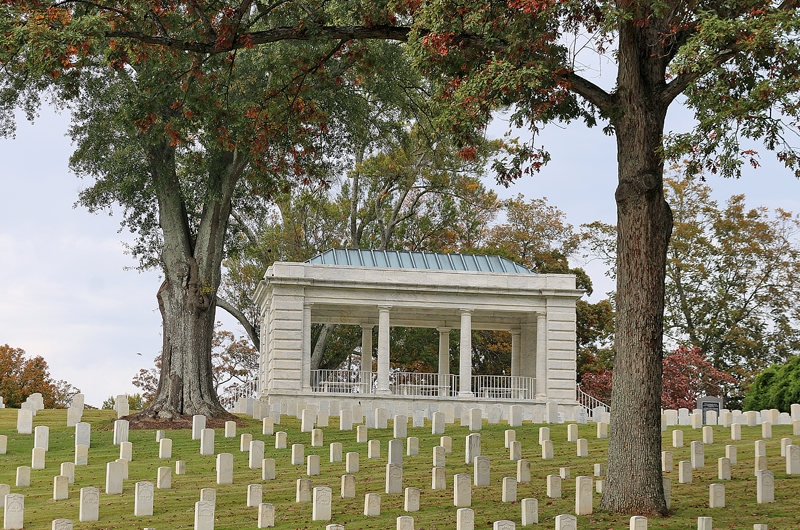
A rostrum is a raised platform on which a person stands to conduct a public speech, receive an award or medal, play music, or conduct an orchestra.
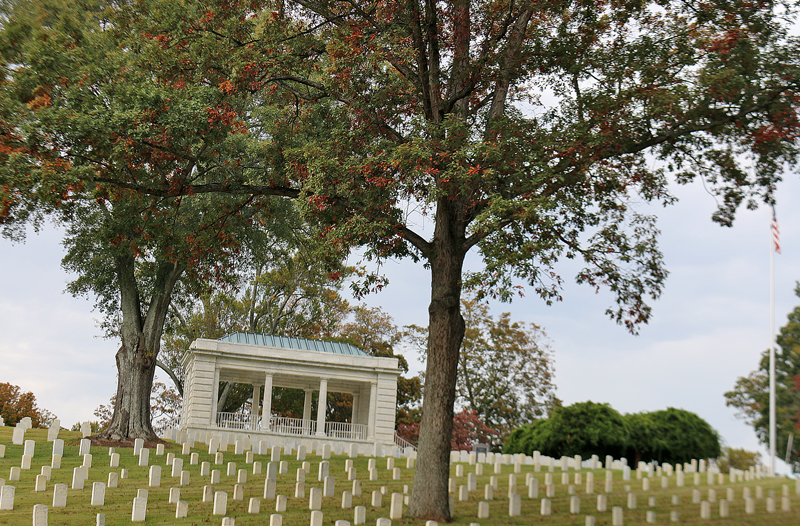
Originally known as the Marietta and Atlanta National Cemetery, the Marietta National Cemetery was established in 1866 to provide a suitable resting place for the nearly 10,000 Union soldiers who died from the Atlanta Campaign, which was led by a general of the Union Army named William Tecumseh Sherman.

During the Civil War, forces under the command of Sherman moved in and occupied Marietta, which was held under siege by federal troops for the next five months. In November of 1864, Hugh Judson Kilpatrick — who was a general who served in the Union Army — commanded his troops to set the town on fire before embarking on their infamous March to the Sea.

Considered to be the most ornate and elaborate of its era, the layout of 21 burial sections of Marietta National Cemetery — which tailored to the natural landscape of the property — was designed by Thomas Budd Van Horne, who was a chaplain with the 13th Ohio Infantry in the Union Army; and he also designed the layout of the Chattanooga National Cemetery.

By 1868, approximately 10,000 remains — including Union dead from the Atlanta campaign and those removed from a discontinued national cemetery in Montgomery, Alabama — were reinterred here.

Two monuments were donated—one to the 2nd Division, 20th Corps, and one to soldiers who died in area hospitals. A stone wall enclosed the picturesque cemetery in 1870.
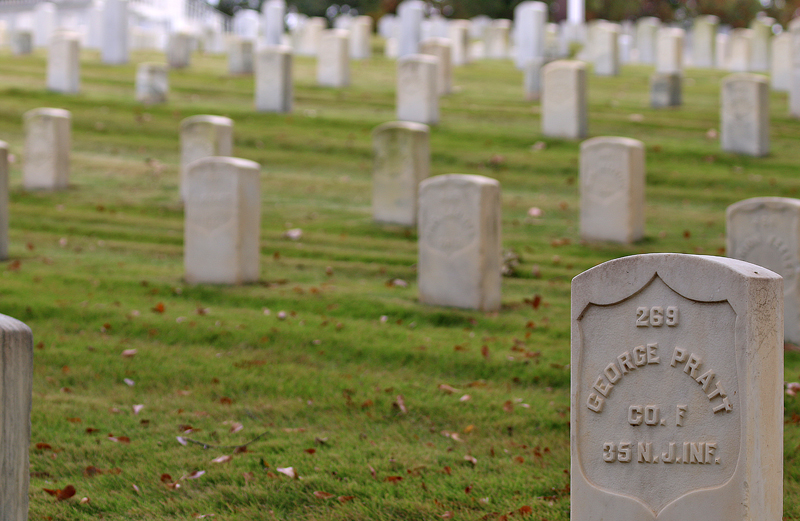
During the Civil War, the fight for Atlanta began in early May of 1864 in north Georgia and ended when troops of the Union Army marched into the state capital on Friday, September 2, 1864. The Union Army and Confederate Army met in sixteen battles over the duration of four months.

For what came to be known as the Atlanta Campaign, Sherman started with 110,000 troops and Confederate Gen. Joseph E. Johnston with 69,000. Johnston tried to force Sherman to assault fortified positions. Sherman instead used his larger army to out-flank the Confederates, forcing a retreat to Atlanta.
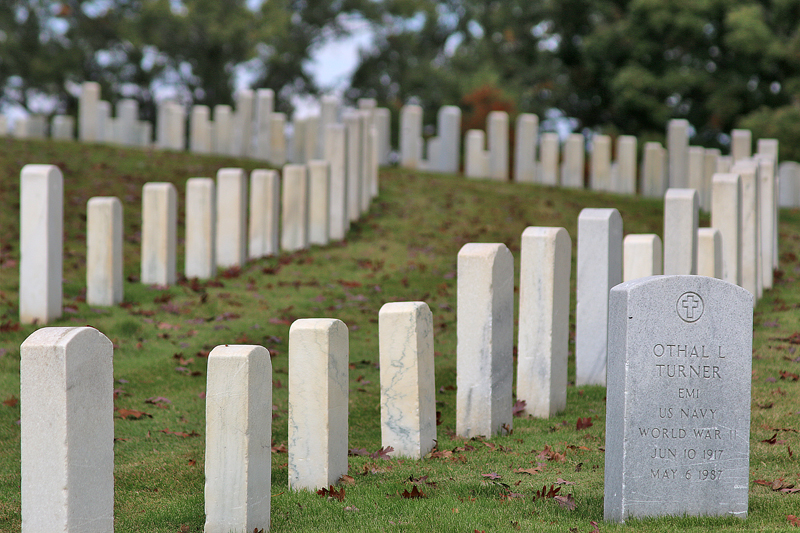
On August 31, the Union Army cut the last rail lines into Atlanta and Confederate forces evacuated the city. By the campaign’s end both armies were staggered by losses. The Union sustained losses of approximately 37,000 men killed, wounded or missing. The Confederates lost 32,000.
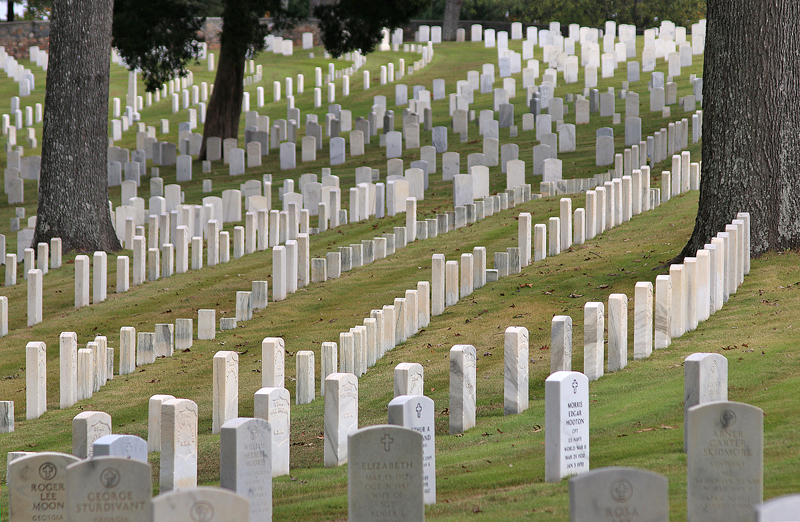
An estimated 700,000 Union and Confederate soldiers died in the Civil War between April 1861 and April 1865. As the death toll rose, the U.S. government struggled with the urgent but unplanned need to bury fallen Union troops. This propelled the creation of a national cemetery system.

Henry Cole, a local merchant who remained loyal to the Union throughout the war, offered land for a burial ground for both Union and Confederate dead.

His hope was that by honoring those who had fallen together, others might learn to live in peace. Unfortunately, both sides clung to their bitterness and neither North nor South would accept Cole’s offer toward reconciliation.
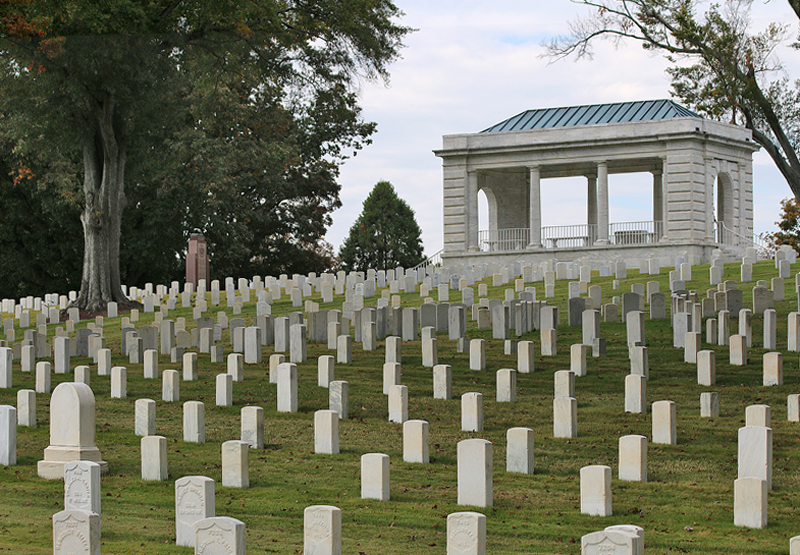
When this effort failed, 24 acres were offered to General George H. Thomas for use of a national cemetery.

In 1867 a second offer of land by Cole was accepted and a subsequent purchase of additional acreage in 1870 brought the cemetery to its present size of a little over 23 acres.
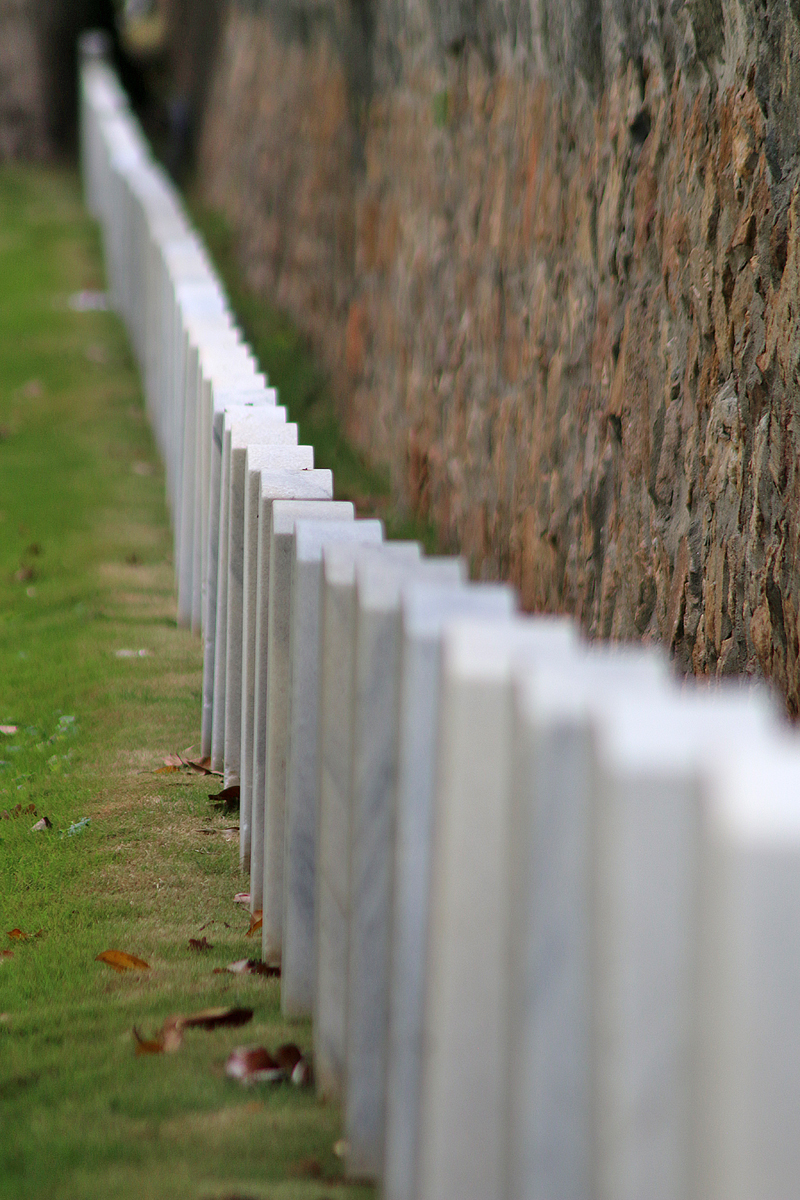
The cemetery site was, at one time, the proposed location of the capital of the Confederate States of America. The same Henry Cole who had attempted to donate his land for the national cemetery had refused an offer of $50,000 for the property because he “expected to put it to a better purpose.”

In recognition of Cole’s gift, the government made express provision that a burial plat be set-aside for members of his family.

The original sections of the cemetery were arranged in concentric circles around a flagstaff with paths radiating through the circles — and the first interments were the remains of soldiers who had been buried where they fell.
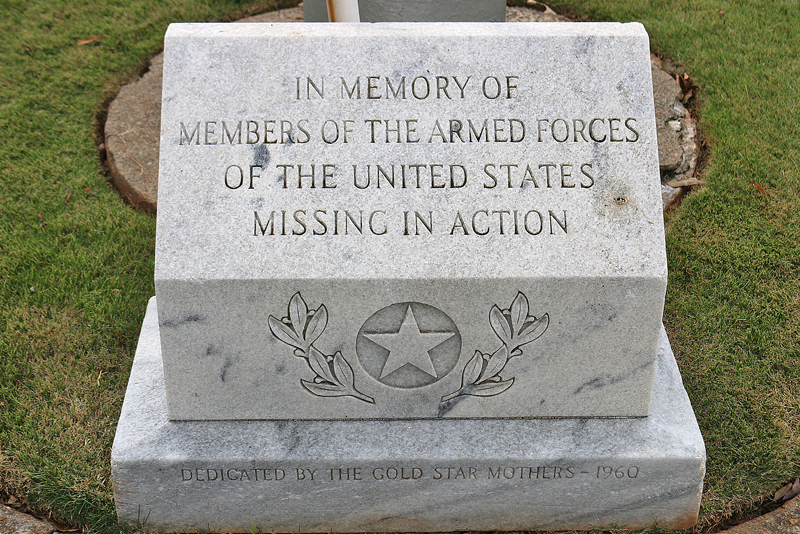
The Atlanta Chapter of the Gold Star Mothers organization dedicated the Gold Star Mothers Monument — in memory of members of the armed forces of the United States missing in action — adjacent to the flag pole on Sunday, April 24, 1960.

The address of the dedication of the Gettysburg National Cemetery by Abraham Lincoln — who was the sixteenth president of the United States from Monday, March 4, 1861 through Saturday, April 15, 1865, when he died as a result of his assassination by John Wilkes Booth — is memorialized on a plaque in Marietta National Cemetery.

This view from inside the rostrum of the Wisconsin Monument is towards the east southeast.
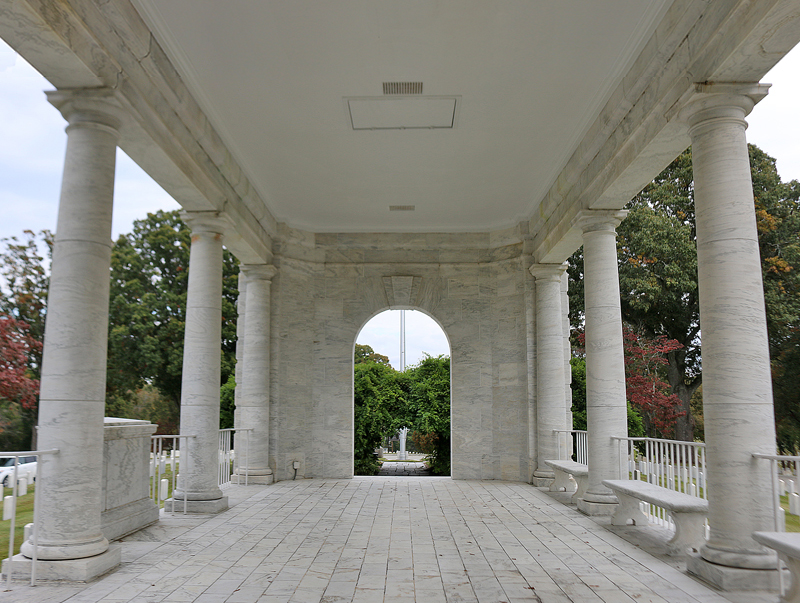
This view from inside the rostrum of the flag pole and the Gold Star Mothers Monument is towards the west northwest.

Daniel Webster Cole — who is the son of land donor Henry Greene Cole — lived for many years in the family home across the street from the cemetery.
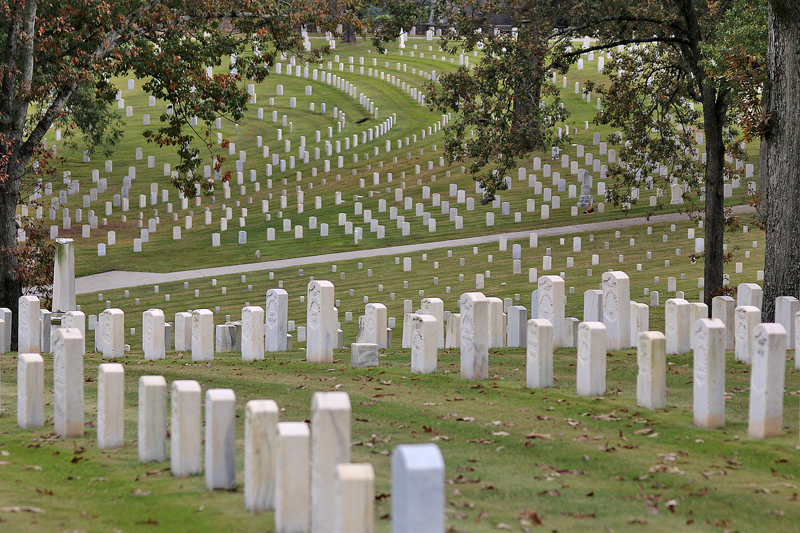
A construction engineer, he drew the first map of the cemetery, which was later the basis for official layouts.

A marble obelisk monument — which was dedicated in honor of 20th Army Corps comrades — was erected in May of 1870.
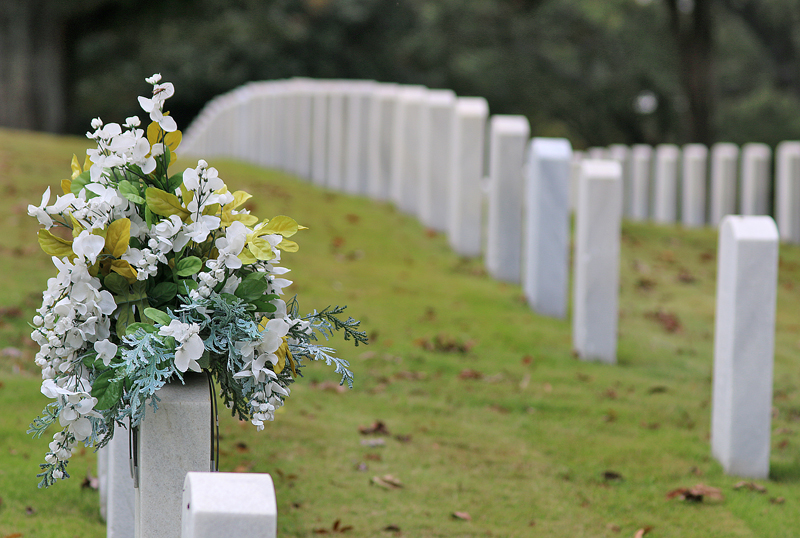
Marietta National Cemetery was officially placed on the National Register of Historic Places on Friday, September 18, 1998.
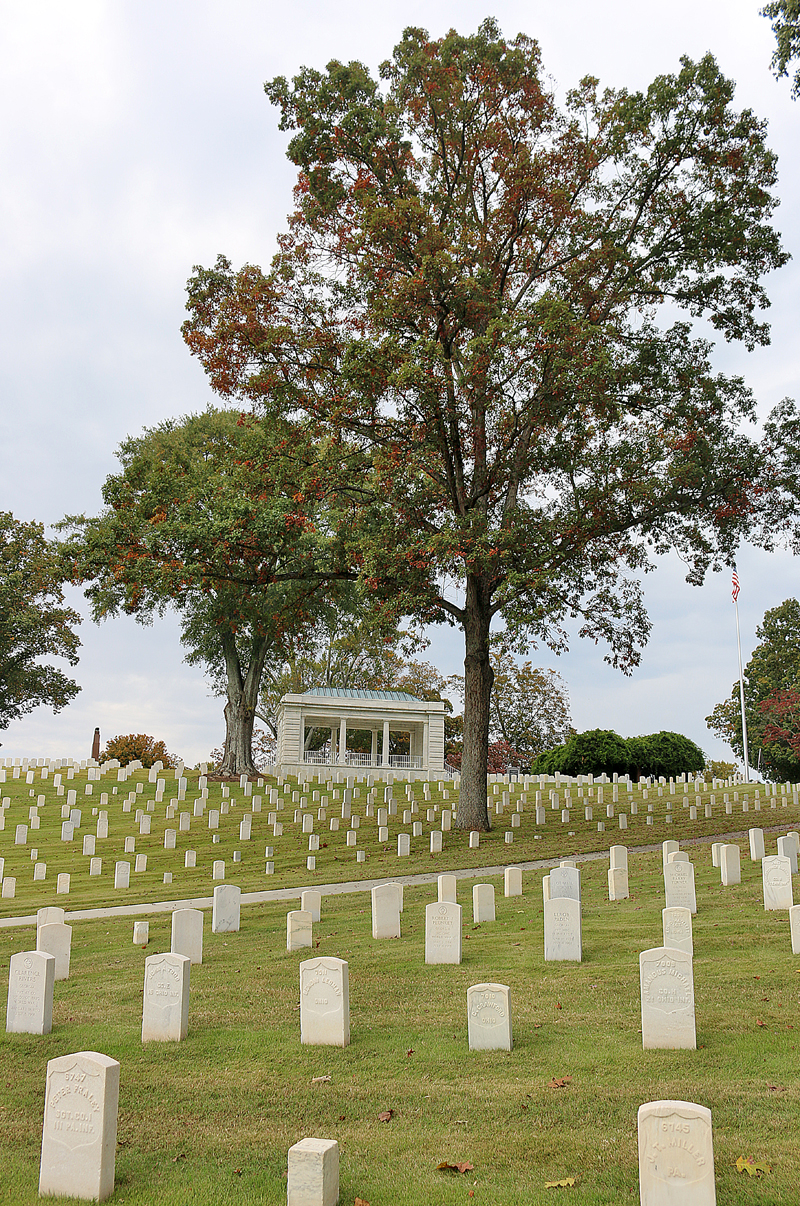
Summary
Located approximately 20 miles northwest of Atlanta and fewer than only five minutes west from exit 265 of Interstate 75, Marietta National Cemetery is an ideal place for history buffs to reflect on the Civil War in a quiet and picturesque setting.
Marietta National Cemetery
500 Washington Avenue
Marietta, Georgia 30060
866-236-8159 Telephone
770-479-9311 Fax
Marietta National Cemetery is open daily from sunrise to sunset. No admission fee is charged to visitors; and you may stay as long as you like until the cemetery closes for the evening.
All photographs ©2017 by Brian Cohen.

